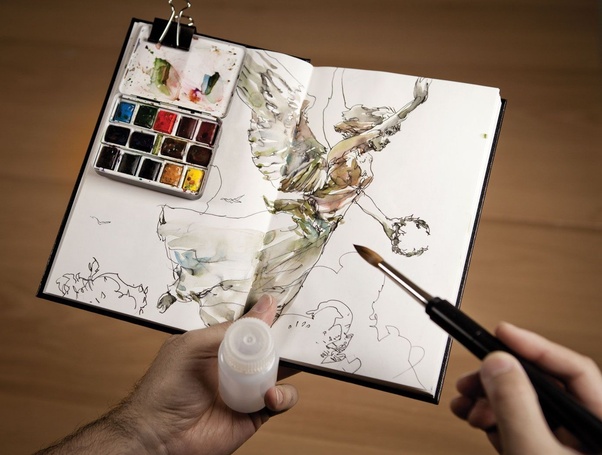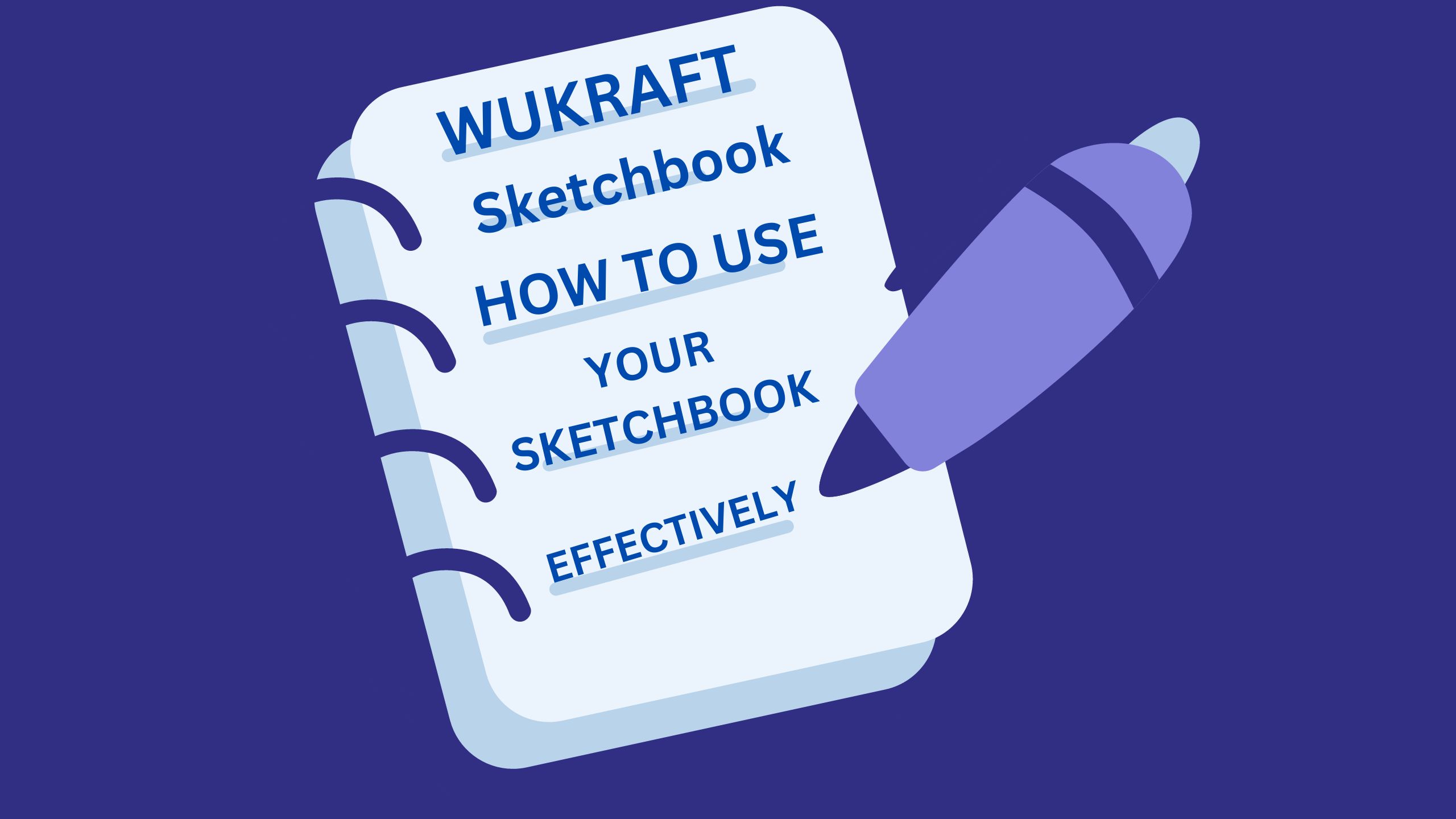The size of your sketchbook can have a big impact on how often and how much you sketch. Smaller sketchbooks are more likely to be carried around with you, making them more accessible for quick sketches and studies. Larger sketchbooks may be more intimidating to use, and you may feel like you need to devote a significant amount of time to them in order to create something finished.
Here are some more specific details:
• Smaller sketchbooks (e.g. A5, A6) are great for carrying around in your bag or purse, and can be used for quick sketches on the go. They are also good for experimenting with new ideas and techniques without feeling like you have to invest a lot of time in each drawing.
• Medium-sized sketchbooks (e.g. A4) are a good all-around option. They are large enough to accommodate more detailed sketches and studies, but still relatively portable.
• Larger sketchbooks (e.g. A3, A2) are best for working on larger drawings or projects. They can also be used for creating journal-style spreads with a combination of sketches, text, and collage elements.
Ultimately, the best sketchbook size for you is the one that you are most likely to use. If you find that you are hesitant to open up a large sketchbook because you feel like you need to create something finished, try using a smaller sketchbook for a while. You may be surprised at how much more you sketch when you have a sketchbook that is always with you and easy to use.
Here are some tips for using your sketchbook effectively:
• Don’t be afraid to experiment. Your sketchbook is a safe space to try new things and make mistakes.
• Don’t worry about perfection. The most important thing is to draw and have fun.
• Set realistic goals. If you are new to sketching, don’t set yourself up for disappointment by trying to create a masterpiece in your sketchbook. Instead, focus on doing short, quick sketches every day.
• Keep your sketchbook with you at all times. This way, you can sketch whenever you have a few spare minutes.
• Don’t compare yourself to others. Everyone sketches at their own pace and in their own style. Focus on your own progress and enjoy the journey.

While a large sketchbook might be ideal for creating journal-style spreads with a combination of different-sized images and text, it doesn’t seem to work out that way in practice. This is evident when comparing the author’s old travel sketchbooks (portrait A5) with their newer Moleskine A4 landscape sketchbook.
When traveling, the artist is much more focused on sketching, and they find themselves sketching all the time. However, they have found that they are less likely to take risks when using the larger sketchbook.
Here are some more specific details:
• The author’s old travel sketchbooks are smaller in size and portrait-oriented, while their newer Moleskine sketchbook is larger in size and landscape-oriented.
• The author feels that they are more likely to take risks and experiment with their sketching when using a smaller sketchbook.
• The author believes that this may be because a larger sketchbook feels more intimidating and they feel like they need to create something finished in order to use it.
Here are some tips for overcoming the fear of taking risks in a larger sketchbook:
• Start with small sketches. Don’t feel like you need to fill the entire page with a single drawing. Instead, start with small, quick sketches.
• Experiment with different materials and techniques. Try using different types of pens, pencils, and markers. You can also try using collage elements or mixed media.
• Don’t worry about making mistakes. Your sketchbook is a safe space to experiment and learn.
• Set realistic goals. Don’t expect to create a masterpiece in your sketchbook overnight. Focus on making progress and enjoying the process.
In essence, the size of the sketchbook affects not only the quantity of sketches but also the quality and style of the sketches themselves. These observations underscore the importance of understanding how the choice of sketchbook size can impact your creative process. It’s a valuable insight to consider as we delve into effective strategies for maximizing the utility of your sketchbook in my upcoming blog.
Another significant factor to consider is my daily routine of initiating each day with a fresh sketchbook spread, complete with my morning reading and a distinctive, prominent date header. I’ve developed a specific design for this ritual in every sketchbook I use.
In the context of a larger sketchbook, I’ve encountered a peculiar dilemma. If, at the end of the day, I’m inclined to make a quick sketch but must start a new spread, my own self-imposed system compels me to either fill an entire spread or abandon the idea for the day. This raises a question: perhaps it’s time to reevaluate and possibly revise this rule that governs my creative process? This intriguing dilemma emphasizes the need for adaptability and the willingness to adjust one’s creative routines, which I’ll be exploring further in my upcoming blog on maximizing the effectiveness of your sketchbook use.
My decision centers around adopting a more flexible and open approach to how I commence each day, which I believe can lead to more dynamic and unstructured compositions. Instead of rigidly beginning each day on a new spread, I’ve chosen to redefine a new day with my customary morning reading and a date header in a lined block, allowing me to position it anywhere on the page. It doesn’t have to monopolize the entire left side of a double-page spread every time.
Furthermore, I’m eager to experiment with small, quick sketches, tossing them onto a page without overthinking, and entrusting the interplay between text, maps, and collage to unify the page. In a recent experiment, I confess I felt a twinge of uncertainty about the outcome, but it served as a valuable reminder that it’s okay to have such moments and trust in my ability to return to the page later and bring it all together.
For the record, I still intend to create full-page or double-page spread sketches without text. However, I’ve been yearning to revisit the type of pages I’ve missed during my recent trips since transitioning to the larger sketchbook.
Now, some may think I’m a tad obsessive about planning beforehand. Yet, I’ve learned from experience that achieving the desired results necessitates careful planning and design. Those beautifully designed journal-style pages don’t simply materialize on their own.
I invest as much time in the design of the sketchbook as I do in the actual sketches, and I find it crucial to be mentally prepared with a well-thought-out strategy. I believe that the key to success in travel sketching lies primarily in the mind – the process of contemplation, followed by decisive action.




